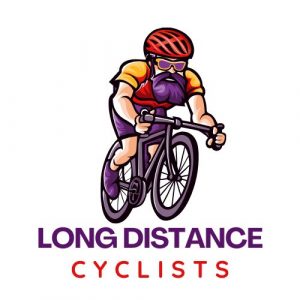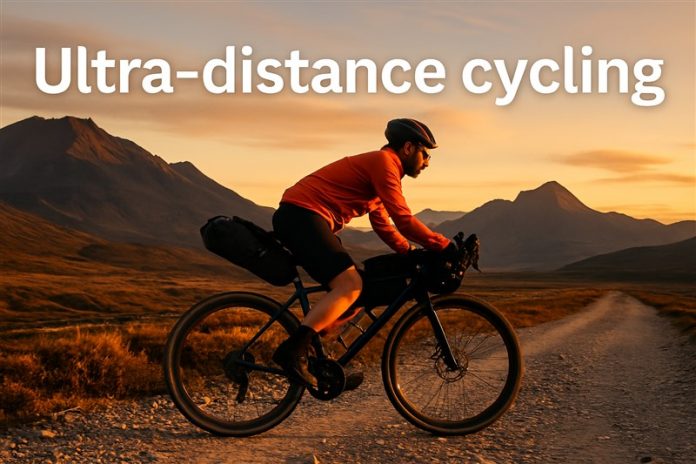Ultra-distance cycling is more than just long rides—it’s a discipline of resilience, strategy, and adventure that pushes riders to their physical and mental limits. Whether you’re navigating across continents or racing through rugged terrain for days without sleep, ultra-distance cycling is one of the purest expressions of endurance sport.
In this guide, we’ll explore the world of ultra-distance cycling—what it is, how it differs from other disciplines, famous riders and events, the essential bikes and gear, and tips for getting started.
What is Ultra-Distance Cycling?
Ultra-distance cycling refers to long-distance rides typically over 200 km (124 miles) and often stretching into multi-day or even multi-week events. These rides may be self-supported, semi-supported, or fully supported and can range from organized races to personal challenges.
Key Characteristics of Ultra-Distance Cycling
- Distances: Usually 300 km to 5,000+ km
- Duration: From 12 hours to several weeks
- Formats: Solo, unsupported, semi-supported, or team events
- Terrain: Paved roads, gravel, trails, or mixed-terrain
- Navigation: Often self-routed using GPS or maps
- Sleep Strategy: Often includes bivvying or sleeping in short intervals
Why Ride Ultra-Distance?
Riders are drawn to ultra-distance cycling for various reasons: the thrill of endurance, the meditative nature of long hours in the saddle, and the chance to explore new landscapes in a deeply immersive way. It fosters independence, discipline, and a strong sense of community.
Ultra-Distance Cycling Disciplines and Events
| Cycling Discipline | Description | Examples |
|---|---|---|
| Track Cycling | Early six-day races on velodromes, now with relay teams or partial daily racing. | Six-day races |
| Road Racing (Professional) | Historic one-day races and stages in grand tours, some of which were much longer than current distances. | Bordeaux–Paris, Porto–Lisboa, Milan–San Remo, Paris–Brest–Paris (historical) |
| Supported Ultracycling Races | Non-stop races with support vehicles, often over long distances. | Race Across America (RAAM), Race Across Europe, Glocknerman, Race Across The Alps, Race Across Russia, Red Bull Trans-Siberian Extreme |
| Road Time Trials | 12-hour and 24-hour road cycling events where cyclists attempt to cover the maximum distance within the time limit. | Christoph Strasser’s 24-hour road record, Bike Sebring, Rad am Ring, Cycling Zandvoort |
| Unsupported Ultracycling & Bikepacking Races | Events where cyclists race unsupported, providing their own supplies and accommodation, sometimes with “trail magic” from strangers. | Transcontinental Race, Trans Am Bike Race, IncaDivide, BikingMan series, Race Around Ireland, Race Around Poland |
| Randonneuring | Non-competitive long-distance rides with optional checkpoints; group riding and drafting allowed. | Paris-Brest-Paris, London–Edinburgh–London, Cascade 1200, other brevets |
| Cyclosportives/Gran Fondos | Mass-participation events that may record times but are less serious than races, with full support along the route. | Bordeaux–Paris (cyclosportive), Styrkeprøven Trondheim–Oslo, Mallorca 312, Tour du Mont Blanc, Lake Taupo Cycle Challenge (extended versions) |
| Century Rides | Organized rides typically 100 miles (160 km) or more, often non-competitive but still with recorded times. | Seattle to Portland Bicycle Classic, Los Angeles Wheelmen Grand Tour |
| Other Road Cycling Records | Long-distance record-setting rides on classic routes where times are kept but not raced simultaneously. | Land’s End to John o’ Groats, Cairo to Cape Town, around-the-world cycling records |
| Gravel Biking | Long-distance cycling on gravel roads, with races or challenges often focused on adventure and camaraderie rather than competition. | Unbound Gravel, Dirty Reiver, DKXL |
| Mountain Biking (Marathon) | Ultra-distance races, typically on rough terrain, with some races exceeding 100 miles (160 km). | 24-hour mountain bike races, Marathon MTB events |
Ultra-Distance Cyclists: Notable Names in the Sport
Several cyclists have achieved legendary status in the world of ultra-distance riding:
Kristof Allegaert
A Belgian endurance machine, Kristof has dominated the Transcontinental Race multiple times. His relentless pace and strategic planning have made him a benchmark in the sport.
Fiona Kolbinger
In 2019, German rider Fiona Kolbinger made history by winning the TCR outright as a rookie—beating over 200 men and women. She’s known for her calm approach and intelligent riding strategy.
Lael Wilcox
An American rider known for smashing records and redefining what’s possible. She won the Trans Am Bike Race and set fastest known times on routes like the Alaska Highway.
The Bikes: Choosing Your Ultra-Distance Setup
Your bike can make or break your ride. Here’s what most riders consider:
Bike Types for Ultra-Distance Cycling
- Endurance Road Bikes: Comfortable geometry for long hours (e.g., Specialized Roubaix)
- Gravel Bikes: Versatile and stable on mixed terrain (e.g., Salsa Warbird)
- Bikepacking Rigs: Built for off-road adventures (e.g., Surly ECR)
Key Features to Look For
- Wide gear range for climbing
- Comfortable geometry
- Mounting points for bags and bottle cages
- Durability over speed
Essential Gear for Ultra-Distance Cycling
Whether you’re racing or touring, gear plays a critical role. The goal is to balance weight, functionality, and self-sufficiency.
Must-Have Gear List
- Navigation: GPS unit (Wahoo or Garmin), maps, smartphone backup
- Lighting: High-lumen front light, tail light, helmet light
- Luggage: Frame bags, saddle bag, top tube bag
- Sleeping Kit: Bivvy bag or lightweight tent, sleeping mat
- Clothing: Merino base layers, waterproof shell, padded bib shorts
- Repair Tools: Multitool, spare tubes, patch kit, pump
- Nutrition: Energy bars, hydration tablets, stove (optional)
Nutrition and Hydration Strategy
In ultra-distance cycling, consistent fueling is vital. Riders often eat every hour, combining real food and energy products to maintain performance and avoid the dreaded bonk.
Common Fuel Sources
- Peanut butter sandwiches
- Energy gels
- Trail mix
- Rice cakes
- Electrolyte drinks
Hydration is especially critical in hot climates. Riders often carry 2–3 bottles and plan stops around water availability.
Sleep and Recovery on the Road
In unsupported events, riders often sleep in bivvy bags by the roadside or find budget accommodations like hostels or motels. Managing fatigue and maximizing recovery are critical skills in these events.
Sleep deprivation can drastically affect navigation, reaction time, and decision-making, so balancing rest with progress is part of the strategic challenge.
Training for Ultra-Distance Cycling
Preparing for ultra-distance events takes months of structured training. Riders typically build base mileage, then work on back-to-back long rides and overnight trips to simulate race conditions.
Key Training Elements
- Long weekend rides (150–300 km)
- Sleep deprivation simulations
- Night riding practice
- Gear testing on loaded rides
- Strength and core work
Getting Started in Ultra-Distance Cycling
If you’re new to ultra-distance cycling, start small and scale up gradually. Local brevets and Audax events are excellent introductions to long-distance riding.
Beginner-Friendly Events
- Audax rides (100–400 km): Organized and supportive
- Bikepacking Overnighters: Try a 2-day ride with camping
- Virtual Challenges: Set your own route and goals
Join forums, online groups, or follow hashtags like #ultradistancecycling and #bikepacking on social media to connect with others and get inspired.
Final Thoughts
Ultra-distance cycling is a uniquely demanding and deeply rewarding pursuit. It’s not about winning—it’s about discovering what you’re capable of. Whether you dream of racing across continents or just riding through the night under the stars, this sport offers an unforgettable way to experience the world on two wheels.
Have you ever taken part in an ultra-distance cycling event, or are you planning to? Share your experiences and thoughts in the comments below!











